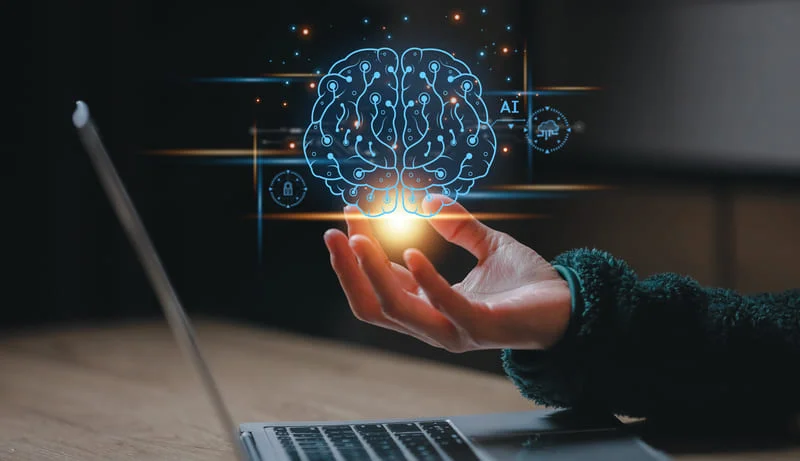The involvement of robots in high-risk jobs can help manufacturers reduce unwanted accidents. By using a process mining tool, manufacturers can compare the performance of different regions down to individual process steps, including duration, cost, and the person performing the step. These insights help streamline processes and identify bottlenecks so that manufacturers can take action. Cobots are another robotics application that uses machine vision to work safely alongside human workers to complete a task that cannot be fully automated. Hot-dip galvanizing is the process of submerging steel in a molten zinc bath to obtain corrosion resistance to protect the steel from harsh environments. After the casting process, steel goes through the rolling mills to reduce the thickness and obtain high uniformity.

Since the complexity of products and operating conditions has exploded, engineers are struggling to identify root causes and track solutions. As a result, companies are highly dependent on
pattern recognition by experienced engineers and spend a lot of time trying to re-create issues in lab environments in an attempt to get to the root cause. As a result, systems are redesigned with each new project but overlook opportunities to reuse parts, driving up costs and increasing supply chain complexity. In addition, engineers can face significant rework on projects from not fully understanding interdependencies across the system. To be competitive in the future, SMMs must begin implementing advanced manufacturing technologies today. Many original equipment manufacturers are pushing requirements down their supply chain and the smaller manufacturers are in a bind.
Inventory management
Some manufacturers are turning to AI systems to assist in faster product development, as is the case with drug makers. AI systems can keep track of supplies and send alerts when they need to be replenished. Robotic workers can operate 24/7 without succumbing to fatigue or illness and have the potential to produce more products than their human counterparts, with potentially fewer mistakes. Manufacturers can potentially save money with lights-out factories because robotic workers don’t have the same needs as their human counterparts. For example, a factory full of robotic workers doesn’t require lighting and other environmental controls, such as air conditioning and heating. RPA software automates functions such as order processing so that people don’t need to enter data manually, and in turn, don’t need to spend time searching for inputting mistakes.
- The trade-off for this expertise is a more considerable margin of error (because they’re human) and overall higher costs.
- Because a simulation takes ten hours to run, only a handful of the resulting trillions of potential designs can be explored in a week.
- Businesses might gain sales, money, and patronage when products are appropriately stocked.
- After establishing a clearly-defined scenario, complete data foundations, and a professional team, the next step is designing a prototype and running a proof of concept (POC) of the AI process.
- The alternating convolution and sub-sampling operations are first conducted at CNN, and then a generalized multi-layer network is eventually implemented.
- The inconsistencies in data acquisition lead to low signal-to-noise ratios, low data quality and great effort in data integration, cleaning and management.
If a company wants to develop AI capabilities, it needs a professional team with AI technology expertise, industry expertise and AI adoption expertise. Datamation is the leading industry resource for B2B data professionals what is AI in manufacturing and technology buyers. Datamation’s focus is on providing insight into the latest trends and innovation in AI, data security, big data, and more, along with in-depth product recommendations and comparisons.
Top Companies Using AI in Manufacturing
AI-based analytics analyze component structures, improving microchip layouts and reducing costs while increasing yields and time to market. Predictive maintenance has emerged as a game changer in the manufacturing industry, thanks to the application of artificial intelligence. By leveraging advanced analytics and machine learning algorithms, AI in the manufacturing industry enables companies to proactively monitor and predict equipment failures, minimizing downtime and optimizing maintenance schedules.

According to Capgemini’s research, more than half of the European manufacturers (51%) are implementing AI solutions, with Japan (30%) and the US (28%) following in second and third. Manufacturers should start applying generative AI or other technologies to targeted initiatives to learn, develop skills, and secure early wins that can be used to build organizational momentum and gain buy-in. “It’s about bringing knowledge into the organization about how to use and implement AI,” MIT Sloan professor John Hauser said at the MIMO Symposium. An interdisciplinary program that combines engineering, management, and design, leading to a master’s degree in engineering and management. Bring a business perspective to your technical and quantitative expertise with a bachelor’s degree in management, business analytics, or finance.
Digital twins help boost performance
Manufacturers can prefer AI-powered process mining tools to identify and eliminate bottlenecks in the organization’s processes. For instance, timely and accurate delivery to a customer is the ultimate goal in the manufacturing industry. However, if the company has several factories in different regions, building a consistent delivery system is difficult. Machine learning solutions can promote inventory planning activities as they are good at dealing with demand forecasting and supply planning.
The conventional method to inspect defects visually through a high-resolution camera faces limitations as it needs to be informed of all types of defects and their possible shapes in advance. Such inspection requires the labeling of numerous defects of shapes of a wide spectrum, which usually accompanies error and tedious human labor. Therefore, it is necessary to make use of the larger portion of unlabeled wafer maps that are available for training. Yu et al. [84] devised a stacked convolutional sparse denoising autoencoder (SCSDAE) which is a combination of CNN and SDAE. A sparse autoencoder (SAE) is known to learn relatively sparse features as it constraints the learning process by adding a sparse penalty term, thereby optimizing the network weights better than the standard AEs. Coupled with SAE, the denoising feature of the network provides robustness in feature representation even if input data has been stochastically corrupted.
Development of New Products
People maintain control of the process but don’t necessarily work in the environment. This frees up vital manufacturing resources and personnel to focus on innovation—creating new ways of designing and manufacturing components—rather than repetitive work, which can be automated. As computer technology progresses to be more capable of doing things humans have traditionally done for themselves, AI has been a natural development. It doesn’t necessarily replace people; the ideal applications help people do what they’re uniquely good at—in manufacturing, that could be making a component in the factory or designing a product or part.
Liu et al. [24] demonstrated that RGB and thermal images could provide complementary information in detecting pedestrians by building four different fusion architectures based on faster R-CNN [25]. The author shows that the halfway fusion where features extracted from both types of images are fused in halfway through the network achieves the best performance. A similar flow of work was presented in [26] but with a few additional fusion architectures. Much of the power of AI comes from the ability of machine learning, neural networks, deep learning, and other self-organizing systems to learn from their own experience, without human intervention. These systems can rapidly discover significant patterns in volumes of data that would be beyond the capacity of human analysts.
Automation Anywhere
Software powered by artificial intelligence can help businesses optimise procedures to maintain high production rates indefinitely. To locate and eliminate inefficiencies, manufacturers may use AI-powered process mining technologies. With AI, factories can better manage their entire supply chains, from capacity forecasting to stocktaking. By establishing a real-time and predictive model for assessing and monitoring suppliers, businesses may be alerted the minute a failure occurs in the supply chain and can instantly evaluate the disruption’s severity.
The window of opportunity to integrate AI into production processes is closing for those who still need to do so. Using AR (augmented reality) and VR (virtual reality), producers can test many models of a product before beginning production with the help of AI-based product development. Commonly known as “industrial robots,”robotics in manufacturingallow for the automation of monotonous operations, the elimination or reduction of human error, and the reallocation of human labour to higher-value activities. Additionally, smart contracts can automate processes and reduce the need for intermediaries, improving efficiency and reducing costs.
For AI in manufacturing, start with data
Without the use of AI in manufacturing, companies require subject matter experts and several dashboards to get an overall picture and make sense of such enormous data. However, the Internet of Things (IoT) and artificial intelligence can together solve this problem. According to studies, manufacturing companies lose the most money due to cyberattacks because even a little downtime of the production line can be disastrous. The dangers will increase at an exponential rate as the number of IoT devices proliferates.
Innovate with Generative AI in Product Engineering
The greatest benefit of this algorithm is that, by way of the structural risk minimization theory, it can prevent dimensionality disasters with kernel features and realize the optimum generalization efficiency of the algorithm. Steel mills, also known as steelworks, are one of the most fundamental industries in the modern world, which specialize in steel production. In this section, AI applications in various steelmaking such as ironmaking, casting, rolling, and galvanizing are introduced. To achieve more sustainable production and environmentally beneficial methods, this steel section mostly discusses FDD, and comparative study of several techniques, modeling, and forecasting of production.
A system like this would be able to detect problems that the naked eye could overlook and immediately initiate efforts to fix them. To better plan delivery routes, decrease accidents, and notify authorities in an emergency, connected cars with sensors can track real-time information regarding traffic jams, road conditions, accidents, and more. Blockchain and AI technologies are also helping companies accelerate the transition away from fossil fuels. Shell worked with Amex and Accenture to create a public blockchain-based chain of custody system that helps increase the availability and use of sustainable aviation fuel.

